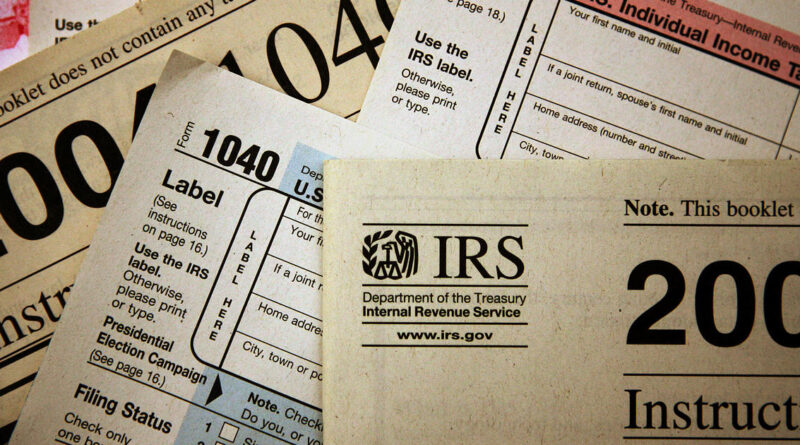The IRS will soon set its new 2025 tax brackets. Here’s the impact on your money.
Some Americans could see lower federal income taxes in 2025 due to an annual bracket adjustment by the IRS. On the down side, this relief could be more modest than over the past two years.
The IRS typically announces its new tax brackets each fall, but experts are already forecasting next year’s adjustments by crunching the same inflation data the tax agency uses in its annual resets.
Tax brackets and other provisions are likely to be adjusted higher by 2.8% for the 2025 tax year, according to Bloomberg Tax and financial information services provider Wolters Kluwer, which both published their forecasts earlier this month. That would mark the smallest inflation adjustment in at least three years, following a 5.4% increase in 2024 and a 7.1% boost in 2023.
The smaller projected adjustment for 2025 comes amid rapidly cooling inflation, which dropped to a three-year low in August after touching a 40-year high in 2022.
Why adjusting tax brackets matter
Adjusting the nation’s tax brackets for inflation helps individuals avoid so-called “bracket creep,” or when workers are pushed into higher tax bands due to the impact of cost-of-living adjustments to offset inflation, without a change in their standard of living.
“The IRS adjusts a host of tax elements each year for inflation,”Jackson Hewitt chief tax information officer Mark Steber told CBS MoneyWatch. “Otherwise, as people march through life and get raises for inflation, they could get pushed into higher tax brackets, and that would undercut any benefit from the raise.”
The IRS’ annual inflation adjustments are based on what’s known as the chained Consumer Price Index, as required by the Tax Cuts & Jobs Act (TCJA), Wolters Kluwer noted. Unlike the primary CPI data familiar to consumers, chained CPI more accurately reflects trends in monthly spending, according to the Brookings Institute.
Both Wolters Kluwer and Bloomberg Tax said their forecasts are based on recent chained CPI data.
New thresholds for each tax bracket
Next year’s tax bracket rates will remain the same, but the cutoffs for each band of taxation will rise based on the inflation adjustments. The individual tax rates will remain 10%, 12%, 22%, 24%, 32%, 35% and 37%, as set by the 2017 TCJA.
The upshot: You’ll have to earn more income next year to reach each higher band of taxation. For instance, a single taxpayer who earns $48,000 in 2025 will have a top marginal tax rate of 12%, whereas in 2024 the top marginal tax rate stands at 22%.
Some people misunderstand how tax brackets work, believing incorrectly that their top rate is what they’ll pay on all of their income. Instead, the brackets represent the percentage you’ll pay in taxes on each portion of your income.
For instance, married taxpayers who file jointly and earn more than $23,850 (the top threshold for the 10% bracket) will likely pay $2,385 in federal income tax — or 10% of their first $23,850 in earnings — and then 12% on any income above that amount, up to $96,950.
Standard deduction for 2025
Other tax provisions for the 2025 tax year will also likely increase by about 2.8% next year, including the standard deduction, according to the Bloomberg Tax and Wolters Kluwer estimates. That deduction represents the amount taxpayers can subtract from their income before federal income tax is applied, so a bigger deduction shelters more of your income from taxation.
The standard deduction next year is projected to increase to $30,000 for married couples filing jointly, up from $29,200 in the current tax year. The standard deduction for single taxpayers is forecast to rise to $15,000, up from $14,600 in 2024, Wolters Kluwer said.
Head of household filers will see the standard deduction increase to $22,500 from $21,900, while those who are married but file separately will see an increase to $15,000, versus $14,600 in 2024.
How to use the new tax bracket info
Although the new tax bracket thresholds won’t go into effect into January 2025, it can be useful to know the new parameters now for tax planning purposes, Jackson Hewitt’s Steber notes.
He also recommends completing a year-end tax tune-up to ensure you’ve paid enough to the IRS during the current tax year. That can help avoid an unpleasant surprise come April 15, he added.
Next, take a look at the projected inflation adjustments for 2025, as well as your expected income next year, Steber said. That can allow you to check if you might need to adjust your withholding, for instance, or plan to save more in your 401(k) or IRA plan.
“With these inflationary projections, you can take a swipe at next year,” Steber said..

